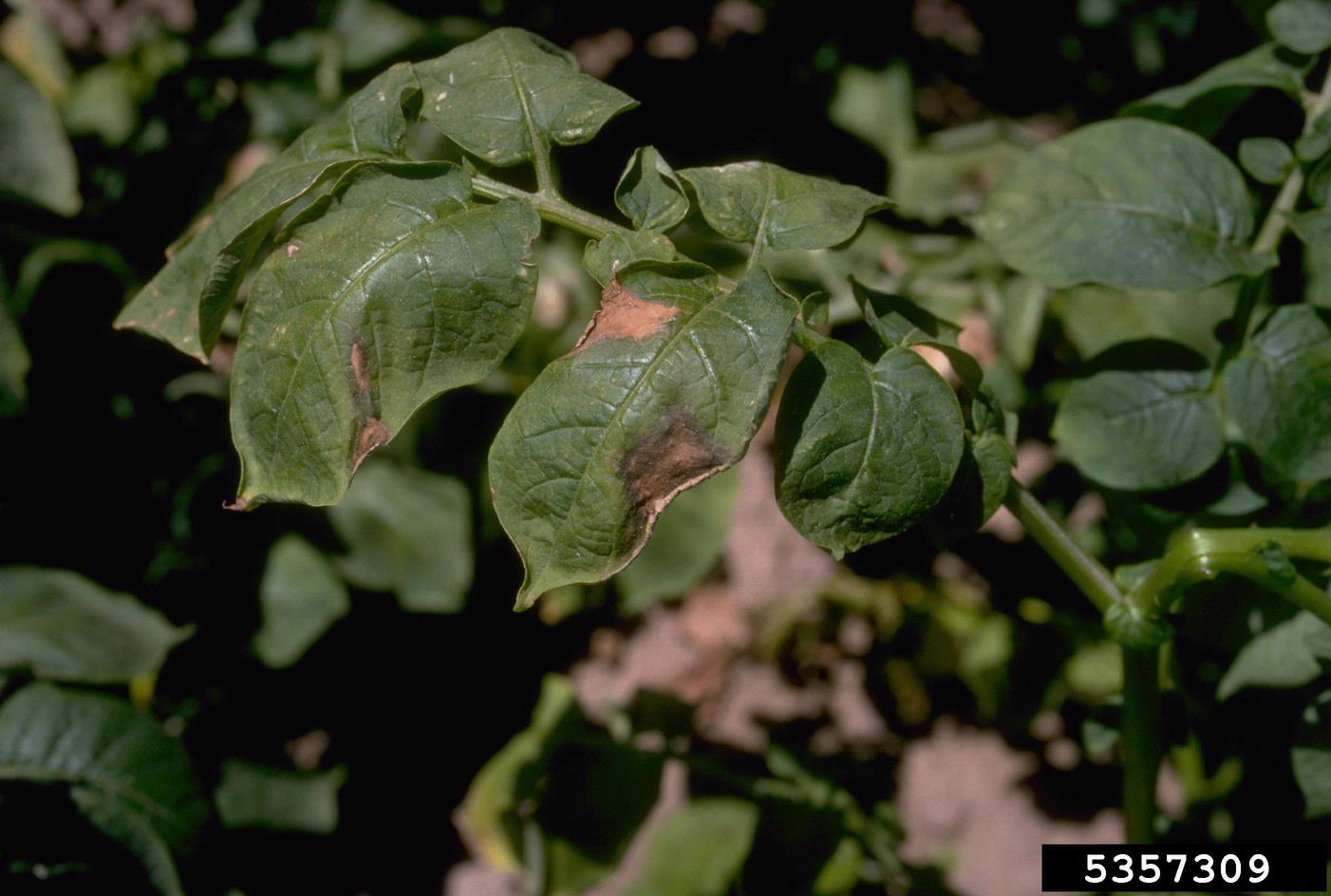Potato Fusarium Wilt Info – Reasons For Wilting Of Potato Plants


Potato fusarium wilt is a nasty but common disease that enters potato plants through the roots, thus restricting water flow to the plant. Fusarium wilt on potatoes is difficult to manage because it can live in the soil for many years. However, there are steps you can take to minimize the damage and prevent spread of disease. Read on to learn more.
Symptoms of Potato Fusarium Wilt
The first sign of potatoes with fusarium wilt is yellowing of the leaves, following by wilting, rolling, or curling, sometimes affecting leaves on only one side of the plant. Symptoms of fusarium wilt typically begin on the lower part of the plant, eventually moving up the stem. The potatoes themselves may be blemished or decayed, often with sunken brown areas, especially at the stem end.
Treating Potato Fusarium Wilt
Potato fusarium wilt is more severe when temperatures above 80 degrees F. (27 C.) or when plants are water stressed. Potato fusarium wilt progresses faster during hot, damp weather. The disease spreads by water, garden equipment, human footsteps, or sometimes by pests. Plant fusarium-resistant varieties, which are marked by an “F” on the label. Look for disease-free tubers that have been pre-treated with fungicide to prevent development of disease. Never plant potatoes in soil where fusarium wilt is suspected. Rotate plants with other plants for four to six years. Avoid planting other solanaceous plants such as tomatoes, peppers, tomatillos, eggplants, tobacco, or petunias in the area. Control weeds, as many harbor disease pathogens. Also, remove infected plants and destroy them immediately. Feed potatoes using a slow-release fertilizer. Avoid high-nitrogen fertilizers, which may increase susceptibility. Avoid excessive watering. Water at the base of plants and avoid overhead irrigation whenever possible. Water potatoes early in the day, which allows plants to dry before temperatures drop in evening. Sterilize tools frequently, using a solution of one part bleach to four parts water when working with potatoes.
Gardening tips, videos, info and more delivered right to your inbox!
Sign up for the Gardening Know How newsletter today and receive a free copy of our e-book "How to Grow Delicious Tomatoes".

A Credentialed Garden Writer, Mary H. Dyer was with Gardening Know How in the very beginning, publishing articles as early as 2007.
-
 8 Perfect Flowers To Plant With Tomatoes To Boost Yields & Banish Pests
8 Perfect Flowers To Plant With Tomatoes To Boost Yields & Banish PestsDon’t forget flowers when choosing companion plants for your tomato beds or pots. These pretty, fragrant blooms add beauty but are also highly beneficial.
By Mary Ellen Ellis
-
 Want The Longest Lasting Hydrangea Flowers? Grow These 8 Panicle Hydrangea Varieties
Want The Longest Lasting Hydrangea Flowers? Grow These 8 Panicle Hydrangea VarietiesFor ornamental shrubs that deliver the longest flowering seasons with plush blooms and delicate hues, these panicle hydrangea varieties are essential in your yard
By Tonya Barnett